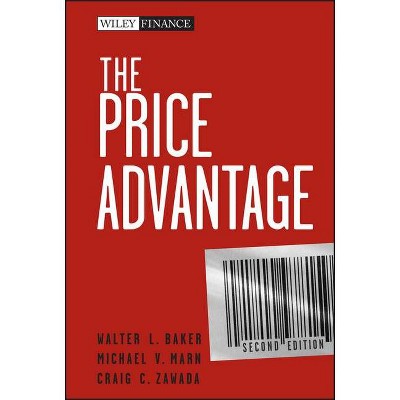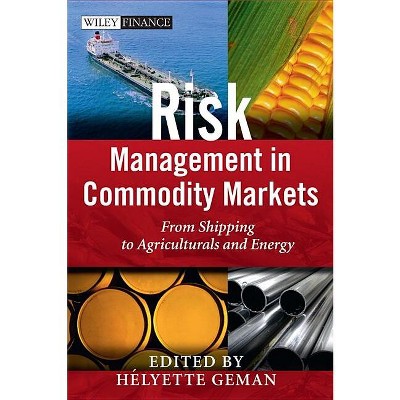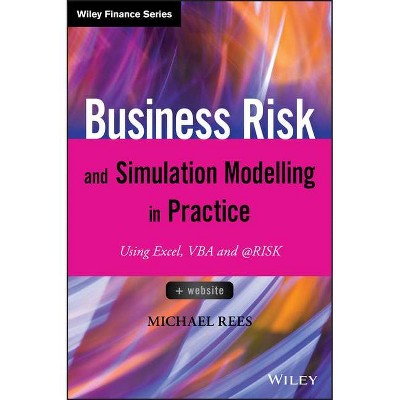About this item
Highlights
- Drive profit and manage risk with expert guidance on trade processing The Trade Lifecycle catalogues and details the various types of trades, including the inherent cashflows and risk exposures of each.
- About the Author: ROBERT BAKER (London, UK) works as a consultant in the development of financial software and in training.
- 416 Pages
- Business + Money Management, Finance
- Series Name: Wiley Finance
Description
Book Synopsis
Drive profit and manage risk with expert guidance on trade processing
The Trade Lifecycle catalogues and details the various types of trades, including the inherent cashflows and risk exposures of each. Now in its second edition, this comprehensive guide includes major new coverage of traded products, credit valuation adjustment, regulation, and the role of information technology. By reading this, you'll dissect a trade into its component parts, track it from preconception to maturity, and learn how it affects each business function of a financial institution. You will become familiar with the full extent of legal, operational, liquidity, credit, and market risks to which it is exposed. Case studies of real projects cover topics like FX exotics, commodity counterparty risk, equity settlement, bond management, and global derivatives initiatives, while the companion website features additional video training on specific topics to help you build a strong background in this fundamental aspect of finance.
Trade processing and settlement combined with control of risk has been thrust into the limelight with the recent near collapse of the global financial market. This book provides thorough, practical guidance toward processing the trade, and the risks and rewards it entails.
- Gain deep insight into emerging subject areas
- Understand each step of the trade process
- Examine the individual components of a trade
- Learn how each trade affects everything it touches
Every person working in a bank is highly connected to the lifecycle of a trade. It is the glue by which all departments are bound, and the aggregated success or failure of each trade determines the entire organization's survival. The Trade Lifecycle explains the fundamentals of trade processing and gives you the knowledge you need to further your success in the market.
From the Back Cover
Drive Profit and Manage Risk with Expert Guidance on Trade Processing
Now in its second edition, The Trade Lifecycle offers a guide to the trade lifecycle and the inherent risks and weaknesses. Step by step, Robert Baker divides a trade into its component parts and tracks it from pre-conception to maturity. The text examines how the trade affects each of the business functions of a financial institution. As well as illustrating each part of the trade process, the author highlights the legal, operational, liquidity, credit, and market risks to which the trade is exposed. The Trade Lifecycle contains a clear understanding of all parts of the trade process, including derivative and credit derivative trades.
The book examines trading in general, as well as trading related to the financial services industry and includes the risk factors associated with trading. The author offers an in-depth review of specific trades and examines the cash flows associated with each. Information is included on the often misunderstood asset classes and derivative products and reviews the three important aspects of trading - liquidity, price, and leverage.
The Trade Lifecycle explores the anatomy of the trade that is the core element of the lifecycle and offers an analysis of the lifecycle in detail. Baker explains the four methods of direct monitoring of trades throughout their lifetime - risk management, market risk control, counterparty risk control, and accounting. He also includes a vivid discussion of profit and loss attribution followed by a full description of the business functions in the lifecycle. Based on the author's real-life experiences, The Trade Lifecycle offers a rare behind-the-scenes look at what happens on the trading floor and includes insight into the real world of capital markets.
Revised and updated, the second edition includes thoughts on the problems caused by Information Technology and offers possible solutions. The new and stricter macro and micro regulations that affect investment banks and other financial institutions are also discussed. This second edition offers an explanation on the difference between asset classes and financial products. It also contains an explanation of the quantitative analyst.
Comprehensive and practical, The Trade Lifecycle offers a one-stop resource for understanding the lifecycle of a trade.
About the Author
ROBERT BAKER (London, UK) works as a consultant in the development of financial software and in training. Robert has over 20 years of commercial programming experience of which the last 13 have been in the financial sector, primarily as a quantitative developer sitting between traders, quants and programmers. He has been involved in credit derivatives for 10 years and has held positions at ABN Amro, Barclays Capital, UBS Warburg, Rabobank, Royal Bank of Scotland and the hedge fund Solent Capital. Robert also has experience of project management across a wide range of asset classes and financial instruments from plain vanilla to complex exotics. The author can be contacted by email at robert.baker@elmcroft.net












